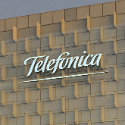Telefónica Hands Huawei a Key Virtualization Deal
Enhanced Platform Awareness (EPA) developments instrumental as Chinese vendor is selected to help Spanish carrier build its next-generation packet core platform in Europe and Latin America.
January 30, 2017

Telefónica has confirmed Huawei's position as a key virtualization partner by awarding the Chinese vendor a significant role in its next-generation network program, Unica.
And it seems that joint development activity focused on optimized hardware utilization in NFV environments has been instrumental in the vendor's selection for what is a critical role in Telefónica's virtualization program.
Huawei is to help the Tier 1 operator build an extensive virtual Evolved Packet Core (vEPC) based on the vendor's CloudEPC platform. Once activated, the system will be at the heart of converged 4G LTE voice and data service delivery to tens of millions of customers across 13 key markets in Europe and Latin America -- Spain, Germany, Brazil, Argentina, Uruguay, Mexico, Colombia, Peru, Panama, Costa Rica, Nicaragua, El Salvador and Guatemala.
The virtual EPC has long been regarded as one of the primary initial NFV use cases: Telefónica identified the introduction of vEPC capabilities as one of its initial virtualization goals when it first unveiled its Unica strategy in early 2014. (See Telefónica Unveils Aggressive NFV Plans.)
And it's not just the system that will enable 4G packet voice and data services -- it's at the heart of MVNO (mobile virtual network operator) enablement, emerging IoT service delivery, private LTE network provisioning and the introduction of mobile edge computing (MEC) capabilities that will become increasingly key to operator fog networking strategies. (See Fog Computing: The Virtualization Angle and The Future Is Foggy – HR Report.)
Want to know more about the companies, people and organizations driving developments in the virtualization sector? Check out Virtuapedia, the most comprehensive online resource covering the virtualization industry.
The selection of Huawei as Telefónica's key vEPC partner will not come as a major shock -- the two companies have been close collaborators covering multiple markets and technologies for years and Huawei has always been identified by the carrier's CTO office as a key SDN and NFV partner.
Still, the selection of Huawei for this critical next-generation network role will sting the Chinese firm's key rivals, Ericsson and Nokia: Ericsson, remember, is now Telefónica's prime Unica integration partner and, in that role, was hoping to pick up many of the key virtual network function (VNF) deals. (See Telefónica CTO: It's Time for Unica Phase II and Telefónica Chooses Ericsson as Its New Virtualization Kingpin.)
But in the past month alone Telefónica has handed two important Unica deals to Chinese vendors -- in addition to the new vEPC deal, ZTE was selected just before the turn of the year to build a multi-market virtual IMS platform in Latin America. (See ZTE Scores NFV Deal at Telefónica.)
And it's clear that Huawei's willingness and ability to develop the appropriate capabilities to suit Telefónica's needs has been instrumental in its selection. Since the inception of the Unica program, the operator has been as focused on the hardware requirements of a telco cloud architecture as it has on the software requirements, and it has long been involved in the development of EPA (Enhanced Platform Awareness) capabilities that enable management and orchestration systems to assign virtual network functions (VNFs) to the optimal hardware platform to maximize performance and service-level agreement (SLA) predictability. In awarding Huawei this vEPC deal, the operator noted:
Telefónica and Huawei have been jointly working and testing Huawei CloudEPC performance, in Telefónica's NFV (Network Function Virtualization) Reference Lab in Madrid. During the test, Huawei CloudEPC showed one of the best performances in both data and signaling planes by good cloud-formation architecture and by using EPA (Enhanced Platform Awareness) technologies. That achievement was a joint effort by both companies within the Telefónica NFV Reference Lab framework.
This is only one part of the Unica program, though, and it's only the initial vEPC step for Telefónica, which is still very vocal on the importance of multivendor environments and the avoidance of vendor lock-in. But it provides Huawei with a considerable opportunity to prove itself as an NFV partner that can deliver in a production environment across multiple markets for one of the biggest communications service providers in the world.
And it provides a very loud wake-up call for Huawei's rivals, which need every Tier 1 carrier virtualization deal they can get in order to remain competitive.
— Ray Le Maistre, 

 , Editor-in-Chief, Light Reading
, Editor-in-Chief, Light Reading
You May Also Like


.jpg?width=300&auto=webp&quality=80&disable=upscale)







